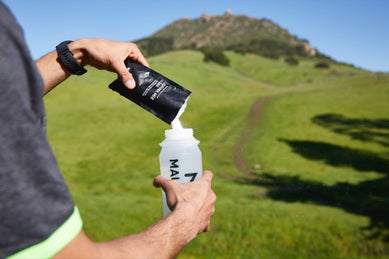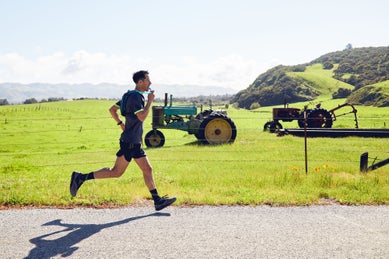The Dangers of Overhydration
As runners, we are constantly being told to be wary of the dangers of dehydration, but very few runners are ever warned about the risks of overhydration. This article explains the dangers of this concept and provides tips on how to hydrate safely while on the run.

Why Overhydrating Can Be Dangerous
According to the latest scientific research, dehydration while running is rarely life-threatening, however overhydration commonly is. To complicate matters further, due to such a heightened fear of dehydration, most runners are far more likely to drink too much water rather than not enough, which can exacerbate the effects of overhydration to alarming levels.
How it Happens
The most severe level of overhydration is medically known as hyponatremia. This can develop from drinking too many fluids before, during, or after a run. It does not result solely from drinking too much water but can also be caused by drinking excessive amounts of sports drinks as well.
Hyponatremia occurs when a runner drinks so many fluids that the body cannot get rid of the excess through normal bodily functions such as sweating or urination. This increases water levels in the bloodstream and dilutes sodium levels in the blood to abnormally low levels. The body's natural process of osmosis attempts to equalise these sodium levels by drawing water from the blood into the body's cells, causing those cells to swell up like balloons. This can create a myriad of issues throughout the body, but the most concerning is if this swelling occurs in the brain. If hyponatremia transpires at this level, then a runner's condition can become life-threatening.
The most common side effects of overhydration are nausea, vomiting, and cramps, which are almost identical to those of dehydration. This often encourages runners to drink even more, making their conditions worse.

Guidelines for How to Hydrate
Learning how to correctly balance hydration to avoid the side effects of dehydration and overhydration can be a serious challenge. This can be even more difficult for runners who are susceptible to cramping or headaches due to their likelihood to overcompensate with excess fluids. Just remember that drinking more does not prevent these problems and can actually make them worse.
Don't Fear Dehydration
Contrary to common beliefs and other aspects of nutrition, athletes do not need to "stay ahead" of their hydration. Instead, research suggests that we should listen to our innate thirst mechanism and only drink when we are thirsty. This will provide a safe and reliable guide to when you need to hydrate. Research also recommends that runners consume electrolytes in combination with their fluids to lessen the effects of overhydration. Hydration mixes and electrolyte tablets are some easily consumable ways to stay hydrated and perform at your best while replenishing your electrolytes.
How to Hydrate Safely
- When you are planning for a long run or event, ensure you will have plenty of fluids on hand, but do not force yourself to drink on a schedule. Instead, just drink when you are thirsty.
- Consider using a drink mix with electrolytes or a hydration tablet in your water, but remember to be aware of your fluid intake even with a sports drink.
- Supplementing with electrolyte tablets can help offset the dilution of sodium in your body on long-distance runs or races.

